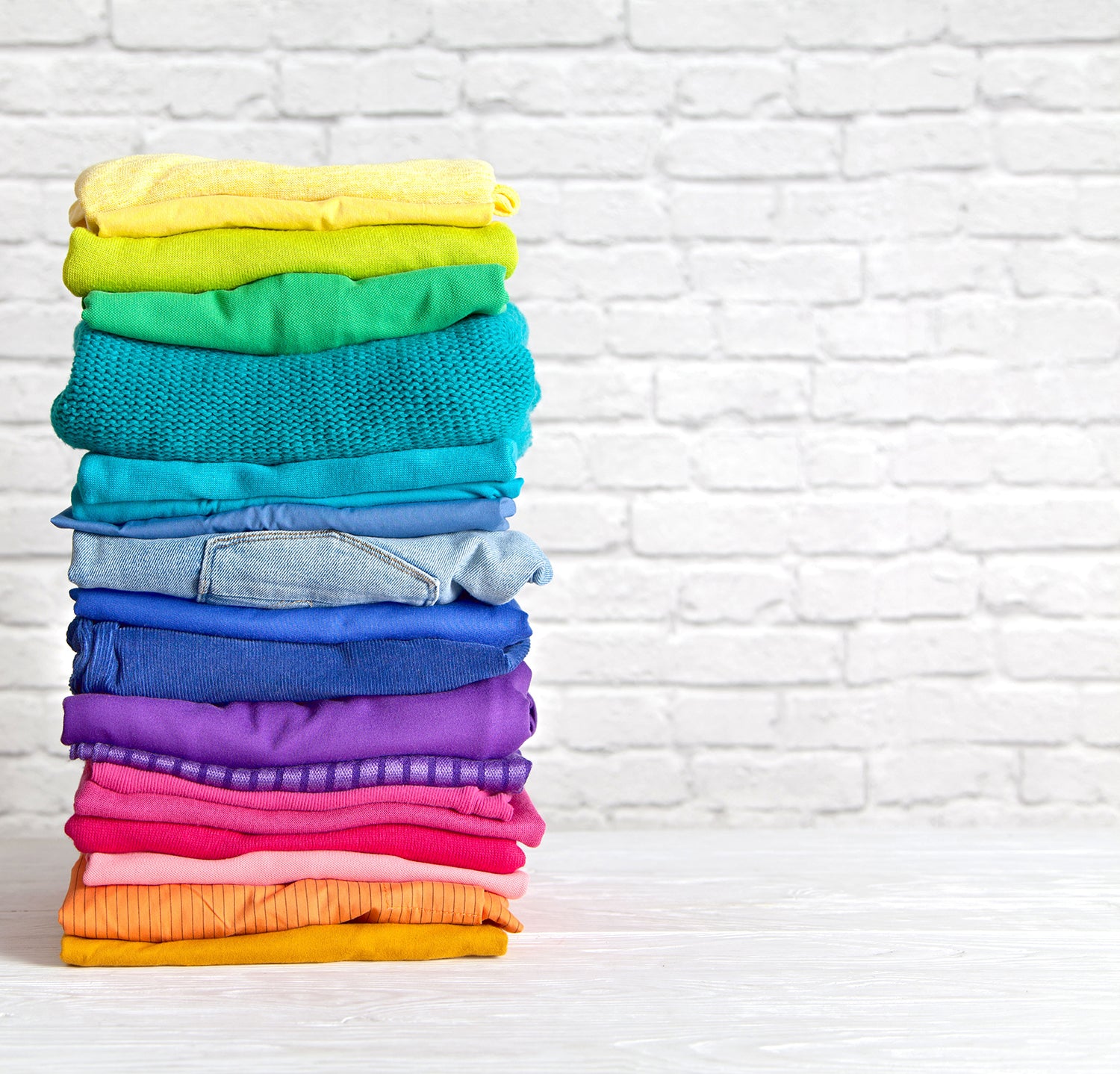
All About Textile Recycling
July 25, 2022
Most people know a little about recycling, but it comes as a surprise to many that textiles (ex: socks, undies, sheets, towels, old t-shirts, etc…) don’t belong in the garbage can. The average American throws away an estimated 70-80 pounds of textiles each year, which equals a lot of textiles in the landfill. So, what the heck do we do with these textiles if they don’t go in the trash? Good question. Let’s learn about what textile waste actually is, how big of an issue it is and how to recycle textiles responsibly.
What is textile waste?
Generally, textile waste is considered any materials leftover unused in the production of garments or garments discarded after use. There are two kinds of textile waste: pre-consumer and post-consumer.
Pre-consumer waste: scraps, parts of textiles used during production, overstock, defective garments
Post-consumer waste: textiles thrown away after use (comes from more disposable fashion and overconsumption)
Is it really an issue?
The EPA estimates that Americans generated 17 million tons of textiles in 2018. 2.5 million tons of these textiles were recycled, 3.2 million tons were incinerated and 11.3 million tons went to the landfills. A garbage truck’s worth of textiles is sent to the landfill or burned every second. These numbers continue to grow as fast fashion brands encourage rapid production and overconsumption of more disposable textiles.
The EPA estimates that only around 15% of textiles are recycled in the United States. Textile waste is definitely an issue considering the rapid rate of textile production, consumption and disposal in comparison to the recycle rate.
What is textile recycling?
As newbies to textile recycling, we were naive and assumed you can just break down fibers and make new fibers. Well, sort of…but not. It’s much more complex and quite frankly expensive when you consider the wide variety of materials used to make today’s clothing.
Some estimate that up to 62% of modern day fibers in clothing are synthetic, which includes polyester, acrylic and nylon. These synthetic fibers encompass a variety of issues including environmental and health concerns as well as supporting industries that may not be using the most ethical practices. These materials are typically more difficult to decompose and even recycle into newer fibers.
There are many different terms used in the textile recycling world. Here’s a simplified version of some common textile recycling terms.
Textile recycling: a general term used to describe the process of gathering discarded clothing and other textiles and reusing or reprocessing the materials - some definitions include reusing or rewearing clothes (shopping secondhand), upcycling (taking something old and turning it into something new and useful), downcyling and textile-to-textile recycling
Textile-to-textile recycling: the least common form of textile recycling but often the one people think of the most. This process involves breaking down the fibers of an original garment or textile and creating a new textile from those fibers.
Chemical recycling: the process of using chemical solvents to dissolve textile waste fibers so they can be made into new fabric - this process makes new fabric that can typically be recycled again
Mechanical recycling: the manual shredding of textiles and separating them into fibers and sometimes combining with other fibers to spin them into a new fabric (can include non-textile materials including recycled water bottles)
Downcycling: considered a form of recycling in which a textile is broken down and turned into a product with lesser value than before (ex: shredding fibers into insulation or rags)
Upcycling: transforming a worn out textile into something new (ex: turning old towels into kitchen rags or cutting your denim jeans into denim shorts)
Reuse: shopping secondhand, hosting clothing swaps or buying/selling in resale stores or on resale platforms online are all considered forms of reuse of textiles
So, how do I recycle textiles?
First steps are to always see if an item can be mended, swapped at a clothing swap, sold secondhand or donated intentionally (not dumping trash garments at you local charity shop). After these steps, consider if your item can be upcycled at home in a DIY.
If you have items that don’t fit any of those categories, check your local area for city-wide textile services. We don’t have any where we live, so we've had to outsource our textile recycling. Here's a list of services we've found to be helpful.
ReTold Recycling: They take everything from beautiful wedding dresses to the solo sock in your laundry hamper to your worn out t-shirt.
Knickey: Send in your old undies, bras - even your kids’ old undies. They will be turned into new materials like insulation and carpet padding.
Blue Jeans Go Green: Check our their website for denim drop off sites or print a label off their website to mail in mostly cotton denim for recycling.
TerraCycle: TerraCycle currently is running a free kids’ clothing recycling program through Carter’s. You can also purchase a ZeroWaste Box and fill it up with a few family members and friends throughout the year.

Recent Articles

What in the World is Ethical Fashion?
December 29, 2021

Ethical Fashion Terms
January 10, 2022

5 Step Closet Clean Out
February 03, 2022

5 Ways to Shop for Your Right-Now Body
February 11, 2022
